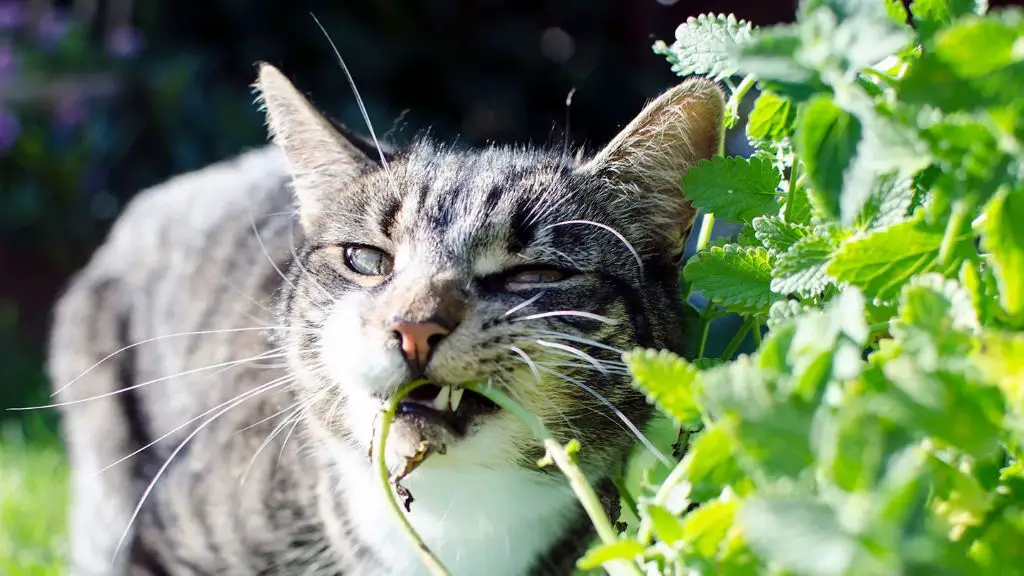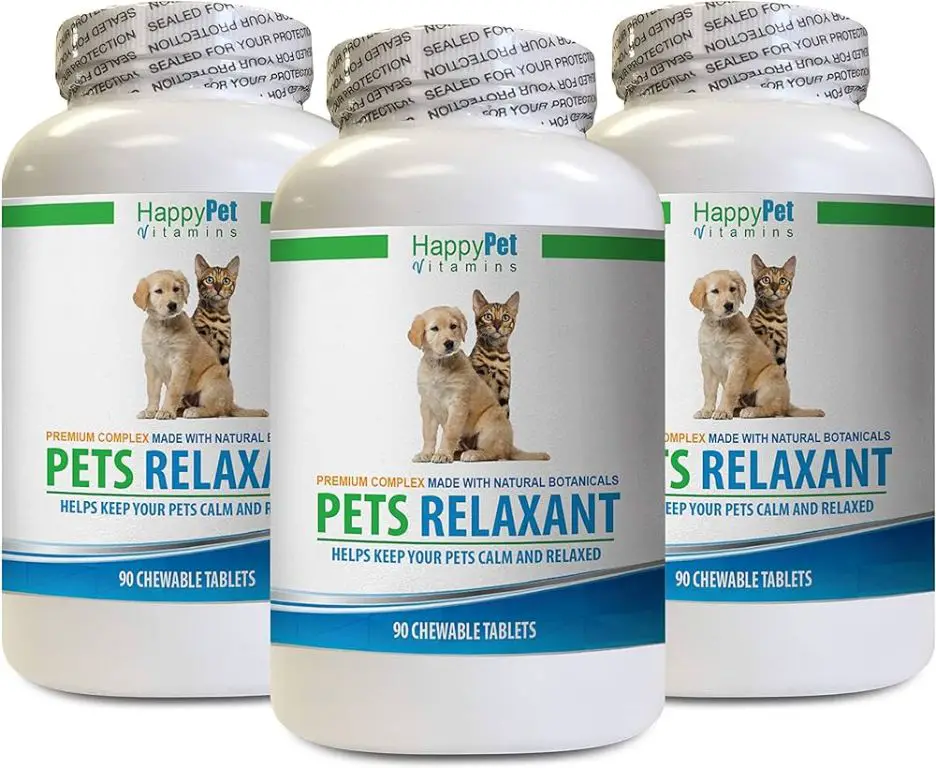Is Catnip Safe For Dogs?
Yes, catnip is generally considered safe for dogs when given in small amounts (1). Unlike in cats, who experience a euphoric reaction, catnip acts as a mild sedative in dogs. The active chemical compound in catnip, called nepetalactone, binds to olfactory receptors in a dog’s nose and passes to the brain where it has a calming effect (2). While catnip can help relieve anxiety and stress in dogs, their reaction is much more subdued compared to the stimulation and hyperactivity it induces in cats.
Some potential side effects of catnip for dogs include upset stomach and diarrhea. However, this mainly occurs when dogs are given extremely large amounts of catnip. Overall, catnip is not toxic to dogs. The ASPCA even lists it as non-threatening to dogs (3). Still, it’s recommended to introduce catnip slowly and monitor your dog’s reaction.
Sources:
(1) https://www.rover.com/blog/is-catnip-safe-for-dogs/
(2) https://blog.healthypawspetinsurance.com/is-catnip-safe-for-dogs
(3) https://www.aspca.org/pet-care/animal-poison-control/toxic-and-non-toxic-plants/catnip
Active Ingredient in Catnip

The active ingredient in catnip that causes the euphoric reaction in some cats is called nepetalactone. Nepetalactone is an organic compound that is part of the class of chemicals known as terpenes. It is found in the essential oil of catnip plants (Nepeta cataria) and acts as a feline attractant. However, research shows that only about two-thirds of cats react to nepetalactone, leading scientists to believe there is a genetic component that makes some cats sensitive while others are unaffected.
For dogs, the reaction is even less common. Very few dogs exhibit a euphoric reaction to catnip. This is likely because the olfactory system and brain receptors in dogs are wired differently than in cats. So while nepetalactone may elicit a response in some cats, most dogs are indifferent to the compound.
Benefits of Catnip for Dogs
One of the main benefits of catnip for dogs is its calming and relaxing effects. Catnip contains an oil called nepetalactone which binds to receptors in a dog’s nose and triggers a calming response (1). Several studies have shown that catnip can significantly reduce stress and anxiety in dogs.
Giving a small amount of catnip to dogs before stressful events like thunderstorms, car rides, or vet visits can help relax them and prevent anxious behaviors. The soothing properties of catnip may also help high-strung dogs generally feel more calm and settled (2).
In addition to relaxation, some pet owners report catnip helps their dogs sleep better. The nepetalactone in catnip acts as a mild sedative which can make it easier for dogs to fall asleep and stay asleep. This can be beneficial for dogs struggling with insomnia or restlessness (3).
Risks of Too Much Catnip
While catnip is generally considered safe for dogs, too much can lead to some risks. The main concern with overindulging in catnip is gastrointestinal upset. According to veterinarians, excess catnip can cause vomiting or diarrhea in dogs (Is Catnip for Dogs Safe? A Vet Explains the Herb’s Effects).
Diarrhea and vomiting can lead to dehydration, especially in smaller dogs. It’s important to monitor your dog closely if they consume a large amount of catnip and watch for signs of dehydration like lethargy, dry gums, and loss of skin elasticity.
Veterinarians recommend avoiding giving your dog catnip daily or in large quantities. Moderation is key when it comes to giving your dog catnip. Too much too often increases the risks of gastrointestinal issues (Is Catnip for Dogs Safe? A Vet Explains the Herb’s Effects).
It’s best to use catnip as an occasional treat in small amounts. Follow recommended dosage guidelines and monitor your dog for any adverse reactions.
Recommended Catnip Dosage
There is no official recommended dosage for giving catnip to dogs. Since catnip is meant for feline consumption, there are no standardized guidelines. However, experts suggest starting with a very small amount and adjusting based on your dog’s reaction.

A good starting point is a small pinch or sprinkle of dried catnip herbs. Give your dog a tiny amount at first to see how they respond. For small dogs, start with 1/8 teaspoon. Medium dogs can try 1/4 teaspoon. Large breeds may handle 1/2 teaspoon.
If using catnip products designed for cats, follow the package directions for feline consumption and adjust the dose down for canine safety. Start with less than the suggested feline dose.
Monitor your dog after giving catnip. Look for signs of stomach upset or other negative reactions. Increase the amount slowly while continuing to watch for issues. Finding the right catnip dosage for your dog may require some trial and error.[1]
How to Give Catnip to Dogs
There are several ways to safely give catnip to dogs:
– Sprinkle dried catnip on food or treats. Start with just a pinch and work up to 1/4 teaspoon for medium or large dogs. Make sure your dog eats all the food so no loose catnip is left over.
– Use catnip-stuffed toys for playtime. Letting your dog sniff and chew on the toy can provide mental stimulation. Avoid toys with small parts that could present a choking hazard. Supervise your dog during play. Source: https://www.thewildest.com/dog-health/catnip-for-dogs
– Brew catnip tea (let cool before serving). Steep 1-2 teaspoons of dried catnip in hot water for 5-10 minutes. Allow to cool completely before offering small amounts to your dog. Catnip tea should be an occasional treat.
– Buy catnip dog treats or chews. Look for products designed for canine consumption with appropriate catnip dosages. Follow package instructions.
Always monitor your dog closely when first introducing catnip to watch for any adverse reactions. Consult your veterinarian if you have any concerns.
Signs of Catnip Toxicity
While catnip is generally considered safe for dogs, consuming too much can cause signs of toxicity. According to the ASPCA, signs of catnip toxicity in dogs may include:

- Excessive vomiting or diarrhea – Consuming too much catnip can irritate a dog’s gastrointestinal tract, causing upset stomach, vomiting, and diarrhea.
- Lethargy or lack of coordination – Catnip has a sedative effect, so too much can cause sleepiness, lack of energy, or trouble balancing and walking normally.
- Agitation or restlessness – Some dogs may become hyperactive or anxious after having too much catnip.
- Trembling or seizures – In rare cases, catnip toxicity can cause muscle tremors or seizures in dogs.
- Drooling or dilated pupils – Additional signs of catnip toxicity include excessive drooling and enlarged pupils.
If a dog consumes a large amount of catnip, it’s important to monitor them closely for any of these symptoms for at least 24 hours. Call your veterinarian if you notice multiple or severe signs of toxicity. Rapid treatment can help prevent lasting effects.
Sources:
https://www.rover.com/blog/is-catnip-safe-for-dogs/
https://www.dailypaws.com/dogs-puppies/dog-safety-tips/catnip-for-dogs
When to Avoid Catnip
While catnip is generally safe for most dogs when given in moderation, there are some instances where it should be avoided. Catnip should not be given to the following dogs:
Pregnant or Nursing Dogs
The effects of catnip on developing puppies is unknown, so it is best to avoid giving catnip to pregnant or nursing dogs. Catnip can pass through a mother’s milk, so nursing dogs should also avoid catnip until the puppies are weaned.
Young Puppies
Kittens under 6 months old do not respond to catnip, and the same may be true for young puppies. Catnip’s effects on puppy development have not been studied, so it is best to avoid giving catnip to puppies under 6 months old.
Dogs with Kidney Disease or Seizures
Catnip acts as a diuretic and can potentially worsen kidney problems in dogs with kidney disease. The hyperactive effects of catnip can also exacerbate seizures in dogs prone to them. It is best for dogs with kidney disease or a history of seizures to avoid catnip.
Dogs on Sedatives
Catnip’s stimulating effects could interfere with the action of sedative medications. Dogs taking sedative medications like acepromazine or benzodiazepines should avoid catnip to prevent any potential negative interactions.
Alternatives to Catnip
While catnip is safe for many dogs in small amounts, some dogs should not have catnip at all. In those cases, there are alternatives that provide similar benefits without the risks. Some options include:
For calming effects, try chamomile, passionflower, or valerian. Studies show these herbs can relieve anxiety and restlessness in dogs (https://www.k9ofmine.com/catnip-for-dogs/). Give them as treats, teas, or supplements as directed.

Cat toys that don’t contain catnip can still provide mental stimulation. Look for toys that roll, bounce, or make noise to capture your dog’s attention and provide exercise.
Food puzzles and chew toys are another way to engage your dog’s mind and instincts. They encourage natural behaviors like seeking, chewing, and problem solving.
Finally, training games and tricks provide mental challenges for dogs. Learn new cues, set up obstacle courses, or play hide and seek with treats and toys.
With so many catnip alternatives for dogs, you can find the right option to provide enrichment without unwanted side effects.
Key Takeaways
Catnip is generally safe for dogs in moderation.
It’s best to start with small amounts of catnip initially when giving it to dogs to see their reaction.
Supervision is recommended until a dog’s reaction to catnip is known.
Signs of potential catnip toxicity to watch for include vomiting, diarrhea, hyperactivity, restlessness, and nervousness.
If any concerning symptoms develop after giving catnip, stop providing it and contact your veterinarian.

